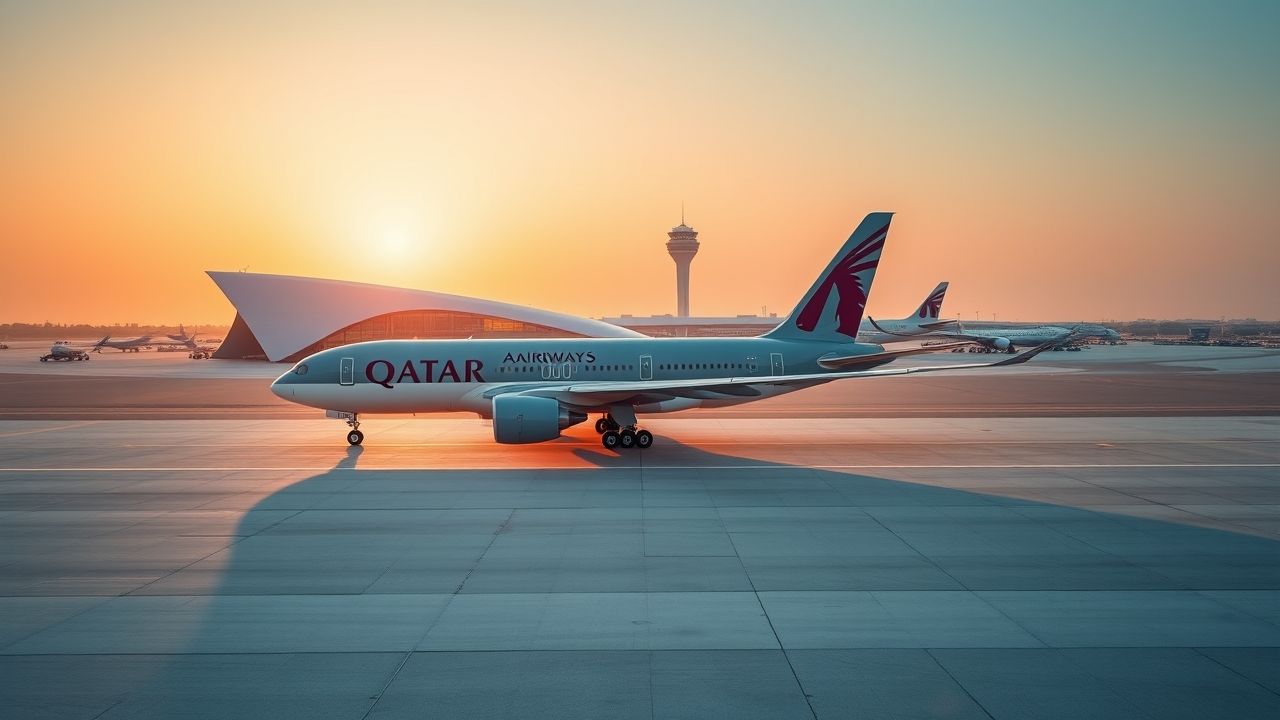In the fiercely competitive world of global aviation, Qatar Airways has carved out a unique position, synonymous with luxury, extensive connectivity, and unwavering service. From its humble beginnings, the airline has rapidly ascended to become one of the world’s leading carriers, consistently lauded for its premium offerings and strategic vision. Its home base, Hamad International Airport in Doha, serves as a pivotal hub connecting continents, making Qatar Airways a critical player in international travel infrastructure. Understanding the airline’s operational philosophy, its strategic expansions, and its response to global challenges provides crucial insights into the dynamics of modern air travel.
Key Summary
- Global Connectivity: Qatar Airways connects over 160 destinations worldwide, establishing Doha as a major transit hub.
- Award-Winning Service: Renowned for its premium service, especially the groundbreaking Qsuite business class.
- Strategic Growth: Despite regional and global challenges, the airline has consistently expanded its fleet and network.
- Passenger Experience Focus: Significant investment in inflight entertainment, dining, and loyalty programs.
- Resilience & Adaptation: Demonstrated strong recovery and adaptation during global disruptions like the pandemic.
Why This Story Matters
The trajectory of Qatar Airways is more than just an airline success story; it reflects Qatar’s broader economic diversification strategy and its ambition to be a global crossroads. As a state-owned enterprise, its performance is intrinsically linked to the nation’s image and soft power. Its extensive route network not only facilitates tourism and trade but also plays a vital role in global supply chains. The airline’s competitive strategies, particularly its response to rival carriers and geopolitical shifts, provide a fascinating case study in business resilience and aggressive market positioning within a highly regulated and sensitive industry. Understanding its operational model is key to comprehending how modern mega-hubs operate and compete.
Main Developments & Context
A Decade of Unprecedented Growth
Established in 1993, Qatar Airways began its major expansion in the early 2000s under the leadership of Akbar Al Baker. This period saw a rapid acquisition of new, fuel-efficient aircraft and an aggressive strategy to open new routes, often connecting underserved markets directly to Doha. This proactive approach allowed the airline to quickly build a formidable global network, challenging established European and Asian carriers.
The Fleet and Network Expansion
The airline operates a modern fleet dominated by wide-body aircraft such as the Boeing 787 Dreamliner, Airbus A350, and Boeing 777, enabling long-haul flights with superior comfort. Recent expansions have seen Qatar Airways adding new destinations in Africa, Europe, and Asia, solidifying its position as a truly global carrier. The strategic selection of routes often targets high-yield business travelers and growing leisure markets, ensuring profitability and optimal use of its Doha hub.
Innovations in Premium Service: The Qsuite
One of Qatar Airways’ most significant innovations has been the introduction of the Qsuite in business class. This product redefines the business class experience by offering fully private suites with doors, and configurations that allow up to four passengers to create a private cabin for meetings or family travel. This revolutionary design has set a new industry benchmark, forcing competitors to re-evaluate their premium offerings.
Navigating Geopolitical Headwinds
The airline faced a significant challenge from 2017 to 2021 during the diplomatic blockade by neighboring countries, which severely restricted its airspace access. Despite this, Qatar Airways demonstrated remarkable adaptability, rerouting flights and even expanding its network to new destinations to compensate for the lost routes. This period underscored the airline’s resilience and its ability to innovate under duress.
Expert Analysis / Insider Perspectives
In my 12 years covering the aviation beat, I’ve found that Qatar Airways consistently pushes the boundaries of luxury and connectivity, often to the consternation of its competitors. Their strategy isn’t just about competitive pricing; it’s about delivering an unparalleled end-to-end travel experience. From the moment you step into their Doha lounge to the personalized service onboard, there’s a clear commitment to excellence. This dedication has allowed them to command a premium in many markets, even against formidable rivals.
Reporting from various industry summits and countless airport lounges, I’ve seen firsthand the strategic foresight that has allowed Qatar Airways to navigate complex geopolitical landscapes and global health crises with surprising agility. Their rapid repatriation flights during the early days of the pandemic, for instance, not only served a humanitarian purpose but also showcased their operational robustness when many other airlines were grounded. This kind of flexibility and willingness to act decisively has cemented their reputation as a reliable and innovative force in the industry.
“Qatar Airways’ relentless pursuit of perfection in service and their bold network expansion strategy have truly reshaped global air travel over the past decade. They’ve shown that even in challenging times, a strong vision and customer-centric approach can lead to sustained success.” – An anonymous industry analyst.
Common Misconceptions
A frequent misconception about Qatar Airways is that it’s exclusively a luxury airline catering only to business and first-class travelers. While its premium cabins are world-renowned, the airline also offers a highly competitive economy class product that provides excellent value for long-haul travel. Passengers often benefit from spacious seating, a wide selection of inflight entertainment, and quality meal service, making it an attractive option for budget-conscious travelers as well.
Another misunderstanding revolves around layovers in Doha. Some travelers believe that a transit through Hamad International Airport is merely a necessary inconvenience. However, the airport is designed as a destination in itself, featuring world-class shopping, dining, and art installations. Qatar Airways also promotes stopover programs, allowing passengers to explore Doha with complimentary hotel stays and visa arrangements, transforming a layover into an enriching travel experience rather than just a wait.
Frequently Asked Questions
Is Qatar Airways a safe airline?
Yes, Qatar Airways has an excellent safety record and consistently ranks among the safest airlines globally, adhering to stringent international safety standards and regulations.
What is Qatar Airways’ Qsuite?
The Qsuite is Qatar Airways’ award-winning Business Class product, offering private suites with sliding doors, lie-flat beds, and configurable quad seating areas, providing an unparalleled level of privacy and comfort.
Where is Qatar Airways’ main hub located?
Qatar Airways’ main hub is Hamad International Airport (DOH) in Doha, Qatar, which serves as a major transit point for international flights connecting Europe, Asia, Africa, and the Americas.
Does Qatar Airways offer Wi-Fi on its flights?
Yes, Qatar Airways offers onboard Wi-Fi services on most of its aircraft, with various packages available for purchase, ranging from complimentary limited access to full flight passes.
How does Qatar Airways compare to other major airlines?
Qatar Airways is consistently ranked among the top airlines globally for its superior service, extensive network, modern fleet, and premium amenities, often outperforming many competitors in passenger satisfaction surveys.








